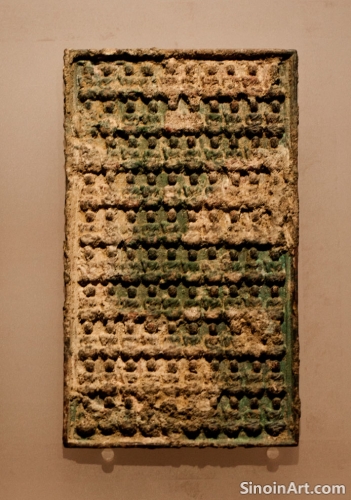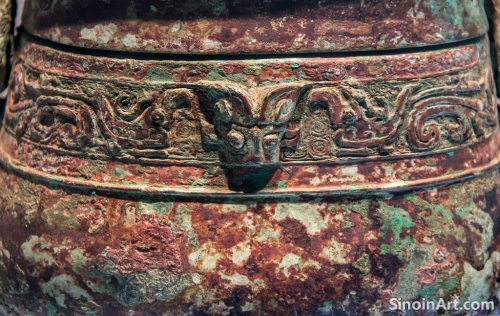The Production and Use of Bronze in the Ancient Kingdom of Shu: The Uniqueness of Sanxingdui
|
The ancient kingdom of Shu, located in present-day Sichuan province, developed its own distinct traditions of bronze production, exemplified by the remarkable archaeological discoveries at Sanxingdui. The bronze artifacts from Shu are unlike those found in other parts of China, showcasing the unique cultural and artistic identity of this powerful and isolated region. The unique bronze work of Shu is a powerful testament to their distinctive culture.  The bronze objects from Sanxingdui, including large, mask-like human faces with protruding eyes, elaborate animal figures, and immense standing figures, are unlike anything found in other parts of China. The unique forms and styles set these works apart from other bronze pieces of the time. These pieces show the distinct beliefs and values of the people of the kingdom of Shu.  The casting techniques used in the creation of these objects were also often unique, suggesting a degree of independence and innovation in the bronze workshops of ancient Shu. The innovations in technique used by the bronze workers of Shu demonstrate a high level of skill and technological advancement.  The bronze artifacts of Sanxingdui highlight the existence of a distinct and complex civilization in the Sichuan basin, one that was largely separate from the influence of the Shang and Zhou dynasties to the north. The unique style of the Sanxingdui pieces shows that they developed independently from the other bronze working traditions of the time. The people of Shu were creating works of art that were not influenced by outside sources. The study of Shu bronze ware offers valuable insights into the cultural diversity of ancient China, emphasizing the importance of regional variations and the need to look beyond the traditional narratives that emphasize the primacy of the Yellow River valley. The study of the Shu kingdom help to broaden our understanding of the variety and complexity of ancient Chinese cultures. |
Tag : Sanxingdui bronzes, Shu culture, Sichuan archaeology, unique artifacts, bronze masks
Related information
- Bronze Ware and the Development of Ancient Chinese Agriculture: Water Management and Irrigation Systems
- The Use of Bronze in Ancient Chinese Astronomical Observatories: Instruments and Knowledge
- Regional Variations in Chinese Bronze Ware: Exploring Cultural Diversity
- Bronze Mirrors as Tools of Divination and Magic in Ancient China
- The Use of Bronze in Ancient Chinese Medicine: Exploring the Relationship Between Materials and Healing
This article explores the use of bronze in ancient Chinese agriculture, highlighting its role in creating water management systems, irrigation components, and other implements that were essential for increasing agricultural productivity and supporting a growing population.
This article explores the use of bronze in ancient Chinese astronomical observatories, highlighting the creation of sighting devices, armillary spheres, and other instruments, and demonstrating how these objects facilitated astronomical observation and knowledge.
This article explores the regional variations in Chinese bronze ware, highlighting how different regions developed their unique styles, forms, and techniques, reflecting the diverse cultural landscape of ancient China.
This article explores the use of bronze mirrors as tools of divination and magic in ancient China, highlighting their perceived spiritual powers, their role in rituals and protective practices, and the insights they offer into ancient Chinese beliefs.
This article explores the use of bronze in ancient Chinese medicine, highlighting the belief that the material itself possessed healing properties, and how it was used in creating vessels for preparing remedies, and in some therapeutic practices.